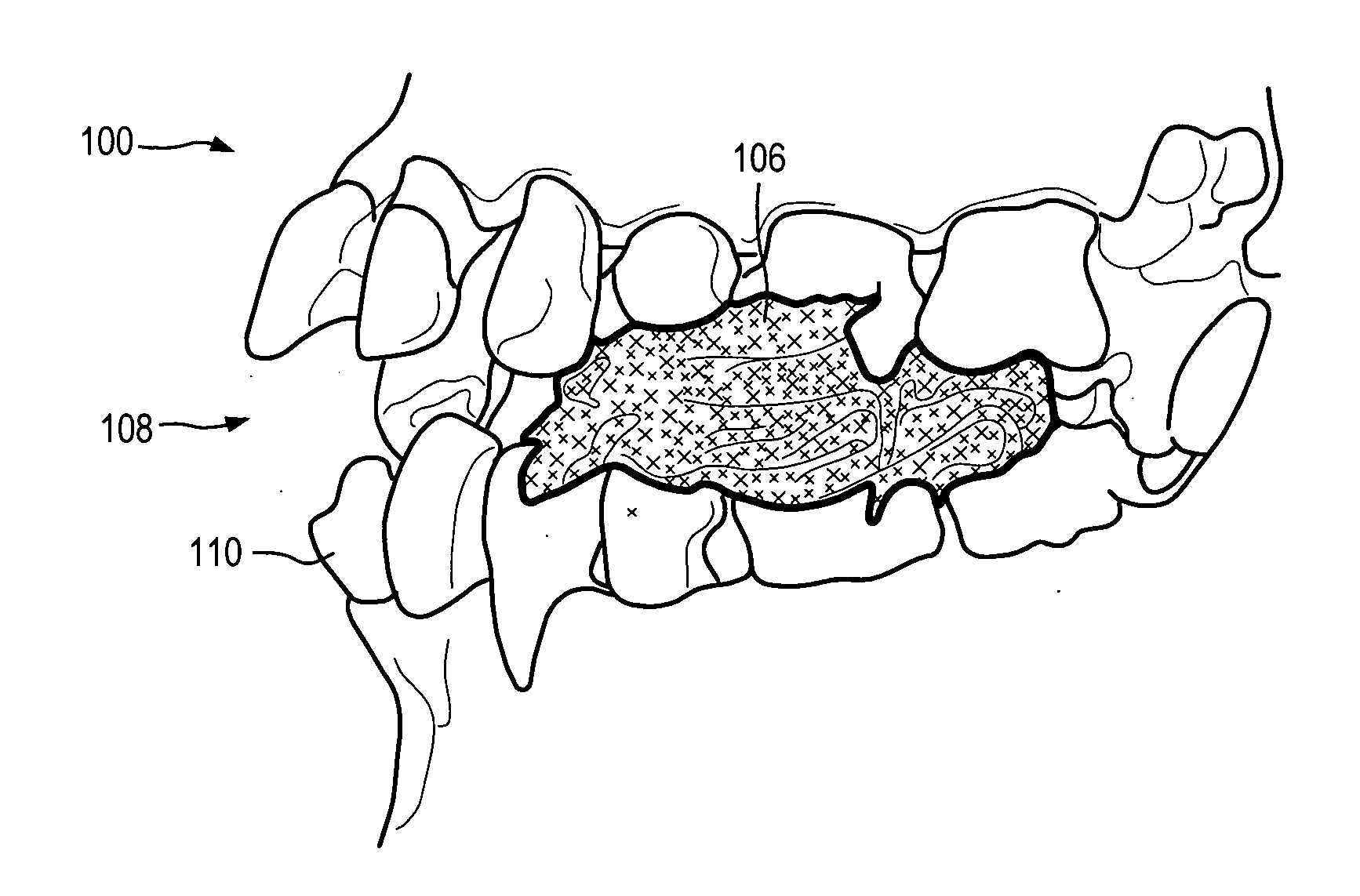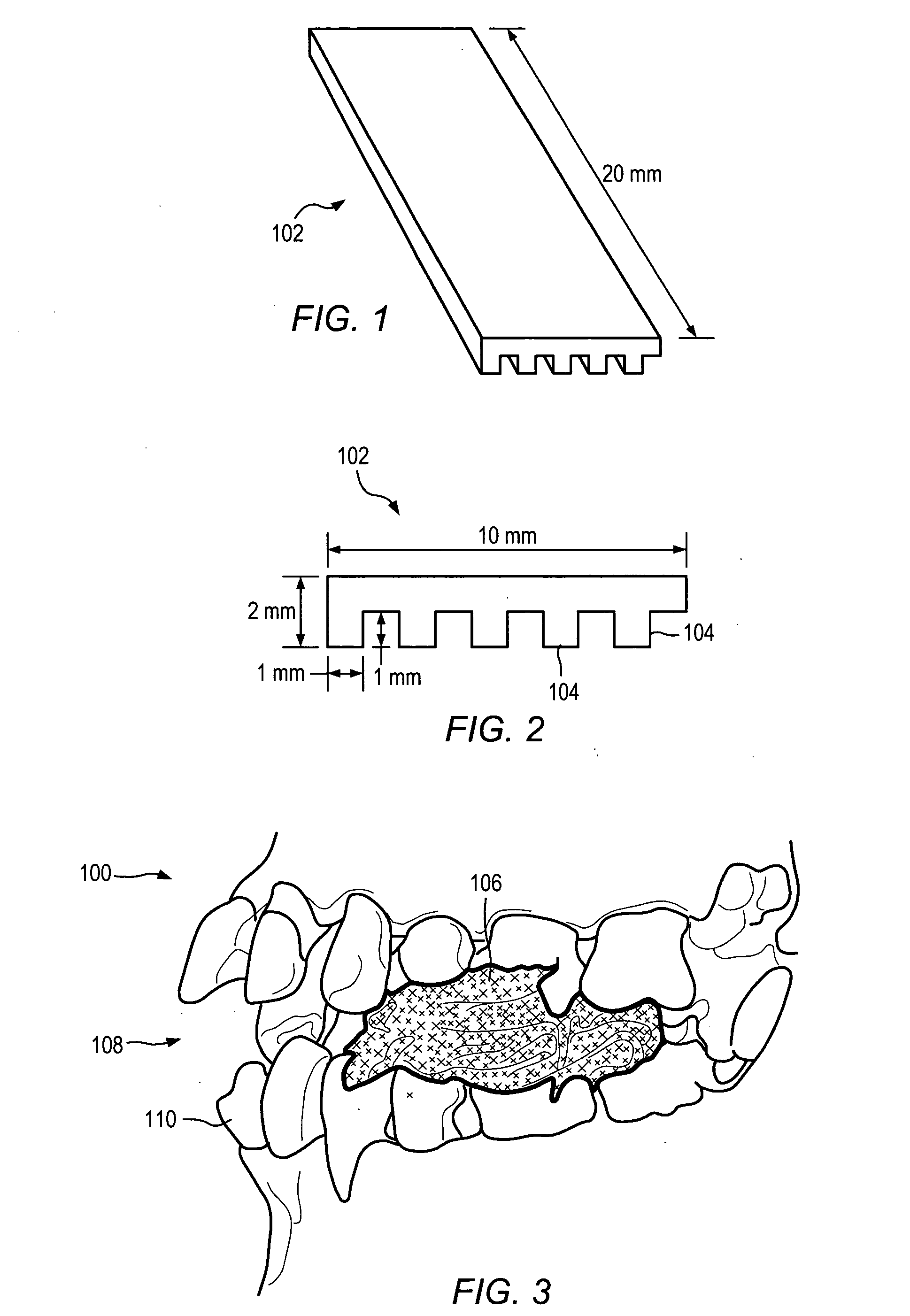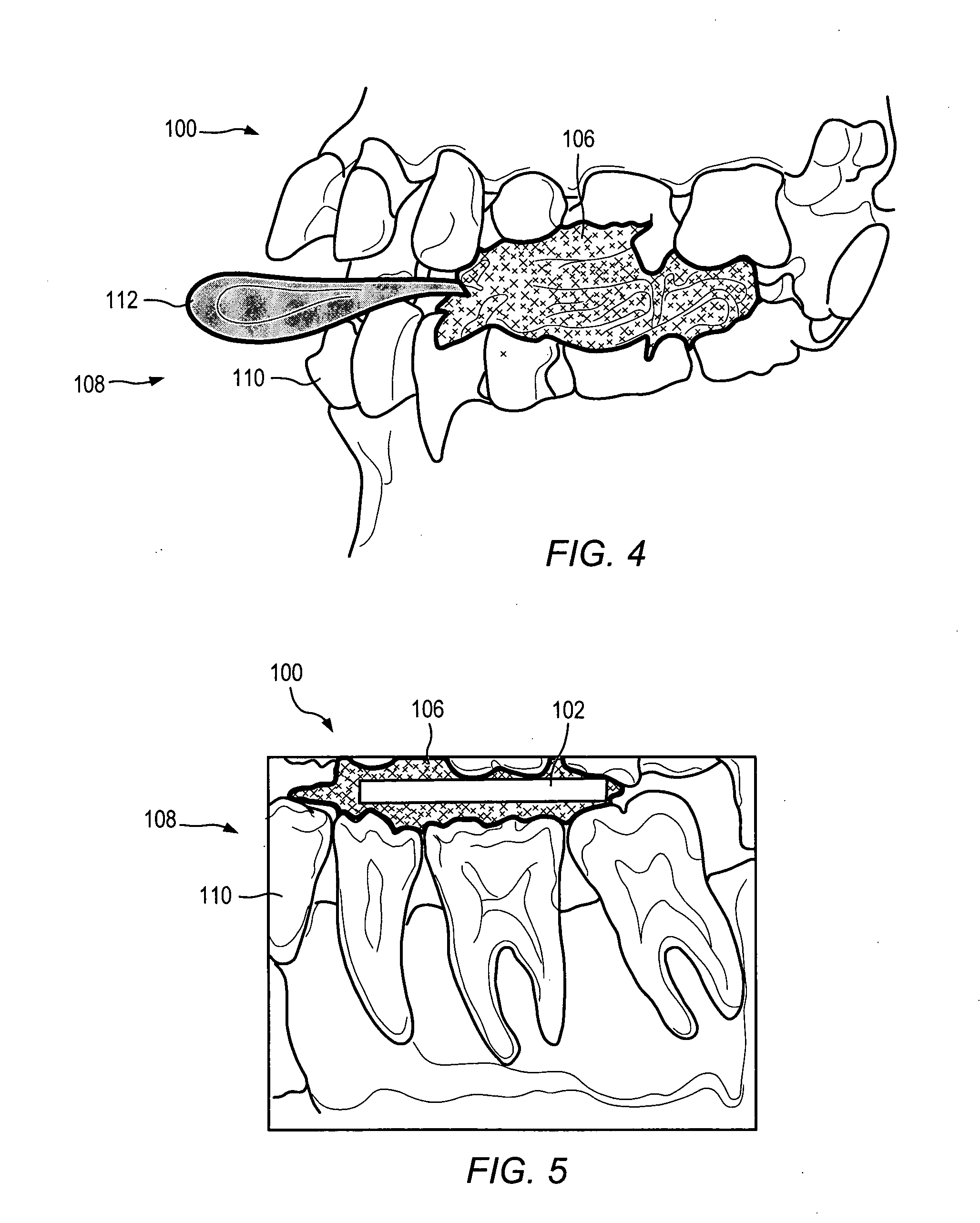Anatomically-referenced fiducial marker for registration of data
a fiducial marker and data technology, applied in the field of fiducial markers, can solve the problems of relatively high radiation exposure, relatively inefficient radiation detectors, and inability to practice techniques in private dental offices, and achieve the effect of facilitating the removal of dental pieces
- Summary
- Abstract
- Description
- Claims
- Application Information
AI Technical Summary
Benefits of technology
Problems solved by technology
Method used
Image
Examples
Embodiment Construction
[0027] Referring to the drawings an anatomical data registration device is designated generally by reference numeral 100. Registration device 100 may be used in conjunction with, for example, a CT scanning instrument. The registration device may be used as or include one or more fiducial markers. The registration device may function to serve as a reference for a physical coordinate system. A physical coordinate system is usually obtained by mapping or registering a coordinate system of a scanned image to a physical coordinate system. Subsequent scans taken at a different time or using a different technique may be registered to a common physical coordinate system in order to view the same features in the different scanned images. Registration is generally defined as the act of adjusting something to match a standard.
[0028] Typically fiducial markers are currently used in combination with other systems to assist in positioning a patient relative to a medical apparatus during a proced...
PUM
 Login to View More
Login to View More Abstract
Description
Claims
Application Information
 Login to View More
Login to View More - R&D
- Intellectual Property
- Life Sciences
- Materials
- Tech Scout
- Unparalleled Data Quality
- Higher Quality Content
- 60% Fewer Hallucinations
Browse by: Latest US Patents, China's latest patents, Technical Efficacy Thesaurus, Application Domain, Technology Topic, Popular Technical Reports.
© 2025 PatSnap. All rights reserved.Legal|Privacy policy|Modern Slavery Act Transparency Statement|Sitemap|About US| Contact US: help@patsnap.com



